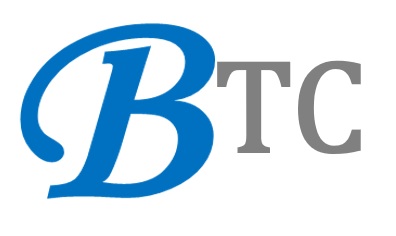
A comprehensive employee retention program is a key differentiator in tight talent markets. Here’s how to reduce employee turnover, retain top talent, and establish an engaged workforce.
Employee retention definition
Employee retention is an organization’s ability to keep its employees under contract, making for a more stable, productive workforce. Companies that are serious about retaining their talent establish policies and programs aimed at reducing employee turnover. Those that succeed in achieving high employee retention rates operate at an advantage both in meeting business goals and in recruiting new hires. A well-establish, well-executed employee retention strategy is a key competitive differentiator, as a company’s ability to hold on to its talent — especially in tight hiring markets — has profound ramifications for its ability to operate at a high level, without the disruptions that employee turnover bring.
Retaining top talent
IT departments in particular have been ramping up efforts to retain valuable employees in the face of ongoing talent gap issues, according to CIOs and enterprise hiring managers.
“There is a talent shortage, which is expected to grow. Numerous studies show that recruiting tech talent is become more and more difficult. Competition is fiercer than ever,” says Nancy Parsons, president and CEO of CDR Companies, an assessment, leadership development, and talent management firm.
[ Discover why good employees leave (and how to prevent it) and the best diversity and inclusion practices for changing your culture. | Get the latest leadership and staff management insights by signing up for our newsletters. ]
Consequently, CIOs must focus as much on retaining their own employees as they are on hiring new ones if they want to have the talent they need. “You can’t always stop the poaching, but you can slow down the people on your team looking on their own to leave,” says Grayson Williams, vice president of enterprise applications at Red Hat, a provider of open-source software products.
For Williams and his colleagues, achieving high employee retention rates means creating the right culture with competitive compensation and flexible work options — all critical elements now that tech workers don’t have to relocate to land their next job. “We focus on making sure this is a great place to be,” he says.
But employee retention requires work and multiple strategies to boost retention rates. Here, Williams and other IT leaders offer employee retention ideas sure to give your organization an advantage on this front in today’s war for tech talent.
10 employee retention strategies for retaining top talent:
- Recognize retention starts with recruiting
- Identify candidates who’ll stay the course
- And identify those who share your outlook
- Provider ongoing education and clear paths to advancement
- Stick with remote work options
- Be competitive with compensation packages
- Deliver for your employees
- Engage your workers
- Put data (and AI) to work
- Be prepared for turnover
1. Recognize retention starts with recruiting
“Retention starts right from the beginning, from the application process to screening applicants to choosing who to interview,” says Dan Pickett, former CEO of Nfrastructure. “It starts with identifying what aspects of culture and strategy you want to emphasize, and then seeking those out in your candidates.”
Pickett had good success at Nfrastructure with this approach, as the company had a retention rate greater than 97% — almost unheard of in the IT industry.
“It’s an increasing returns model; the longer someone’s with your company, the more productive they become over time,” he says. “You have to look at this as a long game and take steps to ensure you’re doing it right by making sure each employee is completely engaged with and part of the company’s ongoing success.”
2. Identify candidates who’ll stay the course
How can you choose candidates that are more likely to stay? There are key indicators right on their resume, says Pickett. First, he says, look for candidates with longevity at their previous jobs.
“You’re looking beyond what’s written on the resume. Have they worked at a company for many years through ups and downs? That speaks to loyalty, perseverance, engagement,” he says. “You should also look for someone who plays team sports, who has committed to volunteer or other activities outside of work — that can help tell you that they are invested in a cause, a team, a sport, yes, but also that they have the mindset to stick with something they really care about.”
Job-hoppers are something of a gamble, he says. While they might just be looking for the right place to land, Pickett says a candidate “who’s had, say, 10 jobs in 12 years is going to be really difficult to retain for any company.”
3. And identify those who share your outlook
Workers tend to stay longer at organizations where they are aligned with the values, vision, and mission, so identifying them during the recruitment process can pay long-term dividends in terms of retention.
“We focus more on identifying candidates for whom our organizational story resonates than strictly focusing on longevity. When top talent feels that they have shared values with their employer, it increases the likelihood that they will stay longer with the organization,” says Loralie Thostenson, senior vice president and technology talent officer at Liberty Mutual Insurance.
4. Provide ongoing education and clear paths to advancement
Promoting from within not only provides a clear path to greater compensation and responsibility, it also helps employees feel they’re valued and a crucial part of the company’s success. So employee development and education are essential.
“First, provide professional and career developmental opportunities that are fitted to each individual,” Parsons says. “This should begin with assessment, coaching feedback, and an understanding of one’s specific in-depth strengths, risk factors, and intrinsic motivators. Once IT learning and development specialists are clear on these, and the individual is self-aware through coaching, then the development should be molded to fit the needs, profiles, and goals of each individual.”
She says studies show that Millennials and GenZers crave career and professional development, with several studies suggesting that 80% or more of them would leave a company that doesn’t offer personal development opportunities.
“Learning cannot just be an afterthought — it must be a core focus of any strong organization,” agrees Kevin Griffin, an IT advisor at Falco Enterprises and former CIO of GE Capital, adding that commitment to training is seen by employees as an investment in their worth and a powerful incentive to stay at the company.
“Investing in your employees’ education can help retain talent and intellectual property at a time when there’s stiff competition for both,” says Griffin. “The need for new skill sets and evolving roles are in demand at rapidly growing rate, so putting someone on a career path that doesn’t have any room to develop is not only a career-limiting move for the employee, but a business-limiting move for the company.”
5. Stick with remote work options
Williams recently had two employees move nearly 2,000 miles away from Red Hat’s headquarters but keep their jobs anyway. “One way we’re retaining people is to let them say remote; we’re focusing on flexibility,” he says.
Employers in general will have to adopt that attitude if they want to keep their workers, experts say.
“The pandemic demonstrated that long-term remote work is possible,” says John Dooney, an HR knowledge advisor with the Society for Human Resource Management (SHRM). “From a recruitment and retention perspective providing increased flexibility for work hours and location of work help increase employee satisfaction, which leads to retention, along with increasing an employer’s competitiveness and attraction to land top talent.”
6. Be competitive with compensation packages
Williams says widescale remote work also means all employers are competing with everyone else, including the tech giants, so “salaries are adjusting to the highest bidders.”
That has IT leaders reviewing pay scales to ensure they’re as competitive as needed to retain talent, HR specialists say, adding that loyal workers expect to be rewarded for staying — and not feel like all the bonus pay is going only to new workers.
Williams says he regularly reviews existing workers’ pay to ensure it’s fair, competitive, and equitable throughout his organization, “ensuring that each individual is being paid for the role they’re in separate from any individual attribute unique to them.”
Pay, though, is only part of the equation, he and others stress. “Compensation, benefits, work environment, opportunities for development, rewards designs all matter,” Parsons says. “For example, in Silicon Valley, if a highly talented tech employee isn’t fully satisfied, he or she can merely walk across the street for a new and better opportunity. This is particularly true in a virtual world, post-COVID, where there are no longer geographic restrictions.”
7. Deliver for your employees
Know what your employees want and be prepared to meet them, experts say.
“It is fair to say that candidate expectations are changing,” Thostenson says. “For instance, people are looking for organizations that can provide flexibility in a way that meets their individual needs and preferences. That is true whether they are the candidate or a current employee. If an organization is unable to provide flexibility, that could make it difficult to attract or retain talent.”
She says Liberty Mutual strives to “recognize that people are multidimensional — and we need to support the whole person — whether that’s through flexibility, a wide range of benefits, financial stability, or meaningful projects to keep them engaged.”
8. Engage your workers
CIOs would do well to connect with their workers to update them on the organization and its direction and to get their feedback.
“CIOs may find that how their technical managers may have handled their interactions during the pandemic with technical employees can impact an employee’s view of the company and their role and job satisfaction,” Dooney says. “Because most employees leave their position because of satisfaction with their manager, if there have been past management issues or an employee felt the employer did a poor job of engaging and handling the workforce during the pandemic, they may be more likely to leave.”
He adds: “Employers may want to conduct stay interviews with employees to help understand any concerns an employee may have, and come up with ways to address those concerns.”
Meanwhile, Parsons suggests regular “state of the business” meetings, held quarterly or at least semi-annual with select or rotating senior executives conducting the sessions.
“All employees should be invited into sessions,” she says, noting there may need to be several sessions so the groups aren’t too large. “Tech people want to know what is going on with strategy, competition, the financials, and the business outlook. Include them and ask for their ideas. They appreciate feeling like partners in the enterprise.”
Another approach is to use an employee polling tool to get the pulse of staff’s attitudes to their work and the organization’s overall vision.
9. Put data (and AI) to work
Organizations have incredible amounts of employee data available that they can use to identify who’s most likely to leave, why they might jump ship, and then take steps to prevent that, says Dave Weisbeck, CSO at workforce analytics software firm Visier.
“I stumbled upon this Glassdoor survey that calls out January as the month when more employees are likely to leave,” says Weisbeck. “But contrary to that survey finding, a lot of the data from our own clients shows that’s not necessarily true. We looked across all of our data — about a million employees — and what we’ve found is a very clear pattern on a quarterly basis, and Q3 is the biggest quarter for resignations.”
Why is that? From the data, Weisbeck says Visier’s team extrapolated that the timing of these resignations isn’t necessarily defined by the calendar but around internal processes and structures such as bonus payments.
“People are thinking of this like, ‘Okay, I received my bonus and now I can leave,’ not ‘Oh, it’s a New Year, time for a new job,’” Weisbeck says. “Since many organizations time their bonuses to hit around Christmas and the end-of-year holiday season, it makes sense to see the January exodus. The pay and bonuses — or lack thereof — aren’t the reason they’re leaving; often times they have decided to leave months before but have hung on until they receive this money.”
Looking more closely at the data can help uncover patterns like this, potentially contradicting conventional wisdom, he says. AI and machine learning can help identify and address these issues before they lead to attrition and turnover.
“Commute time, for example, isn’t as big a factor in people’s engagement, happiness and their chances of leaving a job as distance to family,” Weisbeck says. “If your commute is an hour and a half each way and you have a family at home, you’re not necessarily dissatisfied with the commute; it’s the time you’re not spending with your family. So, organizations could add more flex time. Remote work opportunities. Anything that could help address that pain point.”
10. Be prepared for turnover
Of course, sometimes turnover is inevitable, so organizations must be prepared to lose top talent.
“It’s difficult when we lose someone who’s a rock star,” Pickett says. “But that’s one of the things you have to be prepared for. Especially in the IT industry, it’s so competitive — but it’s also healthy. You don’t want someone who doesn’t want to be there anymore.”
Here, succession planning can be key — especially for high level or hard-to-hire positions. So too can maintaining a high profile.
“Be active in universities, tech organizations, professional organizations, local chambers, written publications, symposiums, and the like,” Parsons says. “Have a strong — positive — presence. Be visible and become the employer of choice.”
This post is written by Mary K. Pratt and Sharon Florentine.
Original post link: https://www.cio.com/article/251060/employee-retention-10-strategies-for-retaining-top-talent.html

